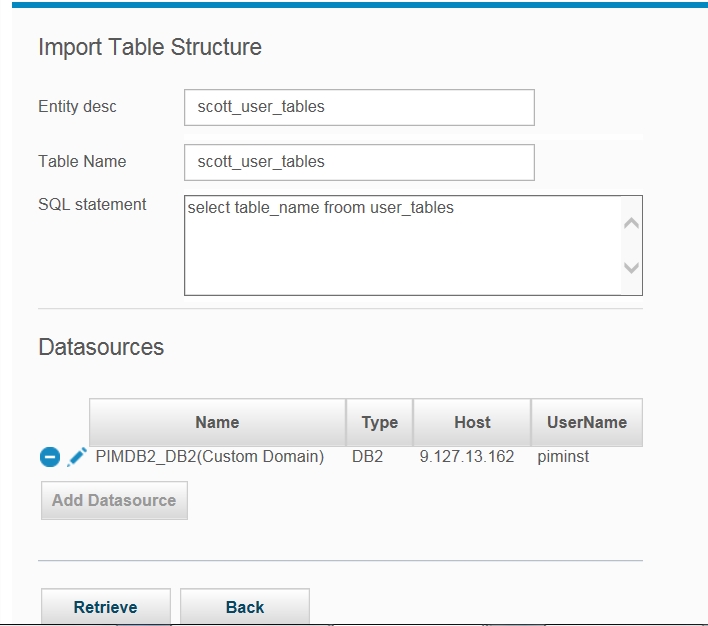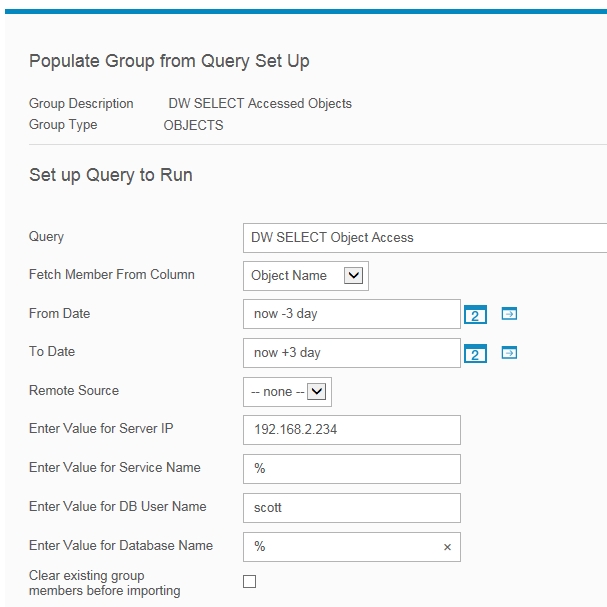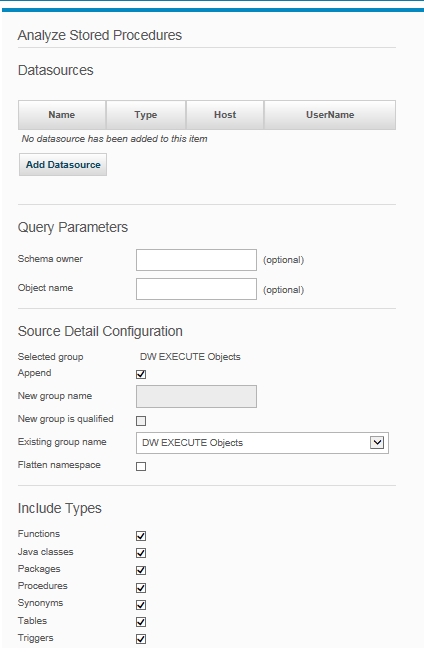Guardium® offers
functionality that can help data architects and DBAs discover which
tables and which fields are not being used.
About this task
The basic concept is the following. You want to know which
tables are not being accessed. You upload all table names from your
database or from your Configuration Management Database (CMDB) using Guardium's custom domain
and custom query functions. Then you use the report (from the custom
query) to populate a group of objects.
Next, you use a report that
uses monitored data to show all object names that have participated
in a SELECT statement. There are predefined reports for this in Guardium 8, all starting with
the prefix DW (Data Warehouse). Then, use the output to populate one
of the predefined groups.
Finally, use a predefined report
that shows all members in the first group that are not members in
the second group.
There are two sets of such reports and groups –
one which focuses on tables and one which focuses on tables and columns.
The only difference is that in the later case groups are of a 2-tuple
type (members that are a composite of a pair of value attributes,
referred to as tuple).
Let's look at an example from start
to finish involving an Oracle database and the EMP user.
Follow
these steps.
- Upload all table names and/or all table/column combinations from
the set of system catalog tables (definitions of the database objects).
- Use monitored data to determine which tables and/or table/columns
have been accessed over a period of time.
- Create a report of all items of step 1 that are not in step 2.
The following Guardium functions
are used for this task.
- External Data Correlation for uploading table names and columns
names
- Populate groups from queries
- Reporting
- Upload all the tables from the system catalog. Do this
by creating a custom table.
Prerequisites
- Define datasource/test database connection
- Upload data (create custom table)
- Create new domain (merge custom tables with existing reports)
See External Data Correlation for further information.
The
following example is available from .
When the configuration
is complete, click the Retrieve button.
Configuration
- Upload Definition, Import Table Structure
Upload the data
so that it is in the Guardium system
(as a custom table) and if desired, schedule this upload. This data
will be used to determine the superset of all tables defined in the
system.
Mapping all the objects (and/or objects-fields) in the
system
In this example, dormant data based on table names is
used. But the analysis can include columns, provided the upload tasks
are defined to bring back pairs of <object,field> and
use tuple groups to compare with an observed tuple of object+field.
For
instances of Object-Field, replace the DW Dormant Objects report with
the DW Dormant Objects-Fields report. For instances of Object-Field,
replace the DW Select Object Access report with the DW Object-Field
Access report.
Once you complete the upload, define a custom
domain based on this single custom table and define a report that
retrieves the table names.
Next, populate the group DW All
Objects group from this report and schedule this Import from Query
action if desired. This creates a group that has all the tables as
defined by the system catalog.
Note: When populating the group
DW All Objects group, it should include the information to click Run
Once Now -> Select All -> Click on Import button. Do the same for
Group Name "DW SELECT Accessed Objects". It needs to import all scheduled
definitions.
When done, click the Save button.
- Mapping the object directly
Use monitored
data to determine which tables and/or table/columns have been accessed
over a period of time.
Look at some additional predefined reports.
The DW SELECT Object Access report shows all object names that have
been accessed through a SELECT statement.
Now, populate the
group DW SELECT Accessed Objects group from the report, filling in
the filtering attributes that you require.
Note: When populating
the group DW All Objects group, it should include the information
to click in 'Run Once Now' -> Select All -> Click on Import button.
Do the same for Group Name "DW SELECT Accessed Objects". It needs
to import all scheduled definitions.
The following example
is available from .
When
done, click the Save button.
Configuration - Populate Group from Query, Object Name
- Create a report of all items of step 1 that are not in
step 2.
Use the DW Dormant Objects report to
view objects that are in the all objects group, but have not been
used in a Select.
Contrast this report with the earlier Report –
Table Names. Notice that EMP is not in this report because it was
used in a SELECT statement.
Note: Because group members are centrally managed and synchronized between the Central Manager and
managed units, the content of this report may be delayed by up to 30-minutes. If you need access to
the information that is most up-to-date, run this report on the Central Manager or ask your Guardium administrator to synchronize the managed unit from
the Central Manager.
Further
ways to access tables
Mapping objects indirectly
In
addition to direct SELECT access, tables may be accessed through stored
procedures and functions. In this case, you will need to do a bit
more mapping to allow Guardium to
calculate such SELECTs.
First, use the report DW EXECUTE Object
Access to fill in the group called DW EXECUTE Objects with a set of
stored procedure names that are being executed. Then, use indirect
mapping to generate all the objects being used from within these procedures.
Assume
that you have a procedure defined:
create or replace procedure num_depts(deptnums out NUMBER) is
begin
select count(*) into deptnums from dept;
end;
In this case, every execution of num_depts also
does a select on DEPT.
Use the “populate group from query”
feature to use the Object Name column in the DW EXECUTE Object Access
report to populate the “DW Execute Objects” group. Then,
use this group to populate the DW EXECUTE Accessed Objects group.
In
the Group Builder select the DW EXECUTE Objects from the list and
click on Auto Generate Calling Prox. Select either Using Reverse Dependencies,
which is supported only for Oracle in Guardium 8, or Generate Selected Objects.
If
you choose to use dependencies then you will need to choose a database
that has access to DBA_DEPENDENCIES and what type of dependencies
to follow.
Choose to append members to the DW EXECUTE Accessed
Objects group.
The following example is available from .
Configuration - Auto Generated Calling Prox, Using Reverse
Dependencies
This will add the dependent objects to the group
DW EXECUTE Accessed Objects.


